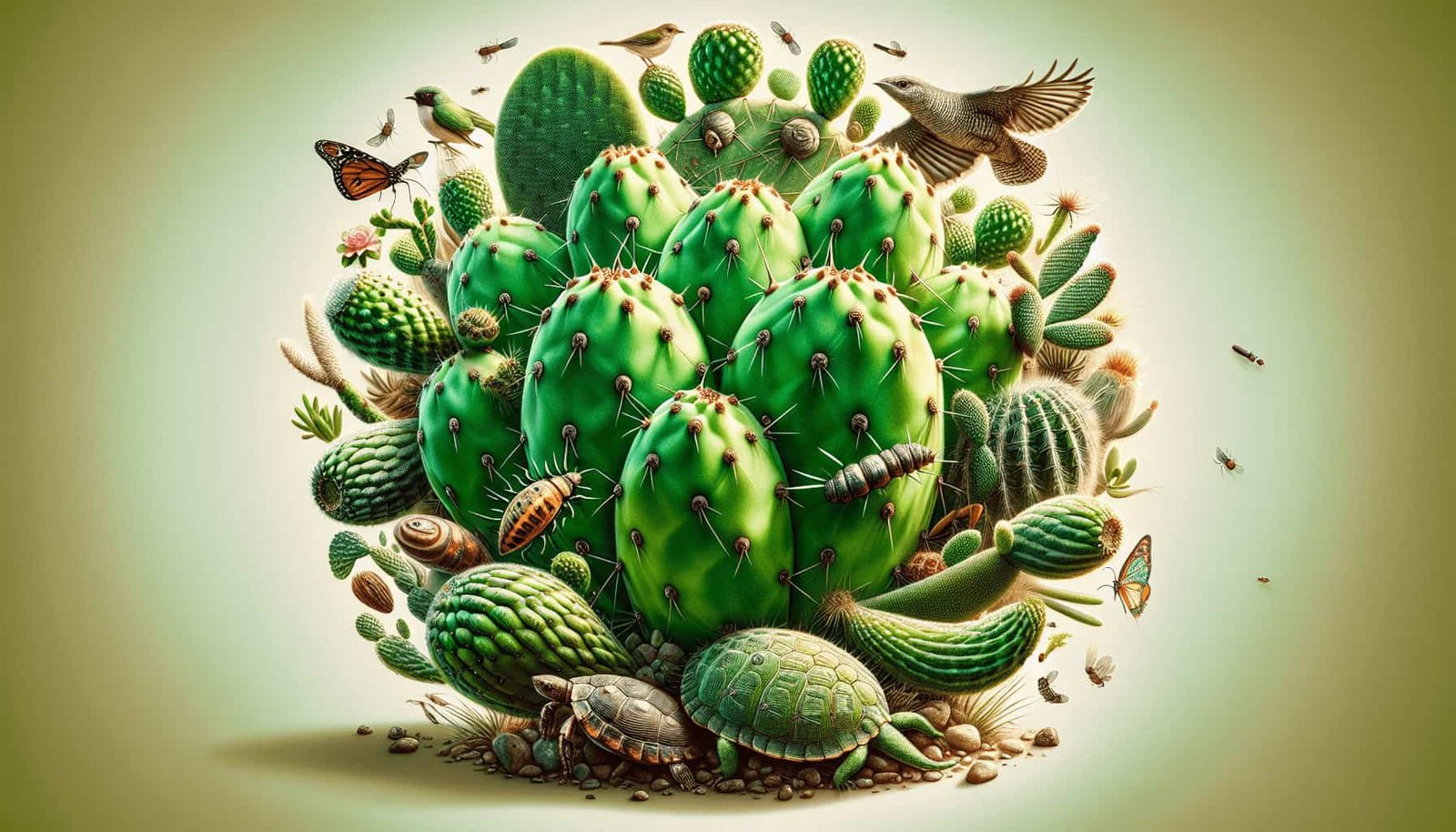Enhancing your nopal’s resistance to common pests can make a significant difference in the health and productivity of your plants. By implementing a few strategic practices, such as selecting pest-resistant varieties, ensuring proper soil conditions, and using natural predators, you can create an environment where your nopal thrives. Furthermore, routine monitoring and early intervention are key to keeping pest populations in check. This guide delves into practical steps and tips that will help you protect your nopal from the most common threats, ensuring a robust and healthy garden.
How Do I Enhance Nopal’s Resistance To Common Pests?
Have you ever wondered how to keep your beloved nopal plants healthy and pest-free? If so, you’re not alone. Nopal, also known as the prickly pear cactus, is a resilient plant, but even the toughest plants can fall victim to common pests. Luckily, there are several ways you can bolster your nopal’s defenses.
Understanding Nopal and Its Vulnerabilities
Before diving into pest resistance strategies, it’s crucial to understand nopal and its natural vulnerabilities. Nopal (Opuntia spp.) is a versatile and hardy cactus native to the Americas. Its thick pads and vibrant flowers are as nourishing as they are beautiful. However, like any plant, nopal is susceptible to various pests, which can significantly affect its health and productivity.
Common Nopal Pests
Several pests commonly target nopal plants. Each pest has its unique way of causing damage, and understanding these can help you build effective defenses. Here are some of the most prevalent pests:
| Pest Name | Description | Symptoms / Damage |
|---|---|---|
| Cochineal Insects | Scale insects that suck the sap from nopal pads, leaving a white, cottony residue | Stunted growth, yellowing pads, and in severe cases, pad death |
| Mealybugs | Small, soft-bodied creatures producing a white, powdery wax on surfaces | Yellowing and wilting pads, sticky honeydew secretion that leads to mold growth |
| Aphids | Tiny insects that feed on the sap, often found in large colonies | Deformed pads, sticky honeydew, and potential virus transmission |
| Nematodes | Microscopic worms attacking roots, disrupting nutrient uptake | Stunted growth, root galls, and overall plant decline |
Improving Pest Resistance: A Holistic Approach
Enhancing your nopal’s pest resistance isn’t about a single magic bullet. Instead, it’s a combination of good practices ranging from optimal planting conditions to biological and chemical controls.
Select Resistant Varieties
First and foremost, start with the right plant. Some nopal varieties are naturally more resistant to pests. These varieties have been bred for their hardiness and ability to withstand common pests better than others.
Maintain Plant Health
A healthy plant is typically more resilient against pests. Healthy nopal plants can fight off infestations before they turn severe. Here’s how you can maintain your nopal’s health:
Proper Watering
Even though nopal is a cactus and doesn’t need much water, it still requires occasional watering, especially during prolonged dry spells. Over-watering or under-watering can stress the plant, making it more susceptible to pests.
- Frequency: Water every 2-4 weeks in the summer and reduce in the winter.
- Method: Ensure well-draining soil and water at the base.
Suitable Soil
Nopals thrive in well-draining, slightly acidic to neutral soil. Poor soil conditions can weaken the plant, leaving it vulnerable to pests.
- Soil Mix: Use a cactus/succulent mix or sandy, loamy soil.
Regular Monitoring and Early Detection
Consistent monitoring of your nopal plants can lead to early detection of pest problems, allowing you to take immediate action before they become severe.
- Inspection: Check plants regularly for signs of pests, like white, cottony patches, sticky substances, or discolored pads.
Pruning and Cleaning
Pruning helps in removing infested parts and encourages air circulation, reducing the chances of a pest infestation. Always use clean, sterilized tools for pruning to avoid spreading diseases and pests.
- Pruning Method: Remove any damaged or heavily infested pads and dispose of them properly.
Biological Controls
Biological control involves using natural predators to keep pest populations in check. This is an eco-friendly way to manage pests without resorting to chemicals.
Ladybugs and Lacewings
Beneficial insects like ladybugs and lacewings can decimate populations of aphids and mealybugs. You can purchase these predators and release them into your garden.
- Release Method: Introduce these insects in the early morning or late afternoon when temperatures are cooler.
Parasitic Wasps
Tiny parasitic wasps can target and lay eggs in cochineal insects and aphids, reducing their populations naturally.
- Introduction: Often sold as eggs, introduce these wasps near infested pads for best results.
Chemical Controls
While the goal is to minimize chemical use, sometimes it may be necessary to protect your plants, especially in severe infestations.
Insecticidal Soaps and Horticultural Oils
These are effective against soft-bodied insects like aphids and mealybugs. They work by suffocating the pests and are generally safe for non-target creatures and humans.
- Application: Spray onto affected areas, ensuring thorough coverage. Reapply as needed, but follow label instructions to avoid plant damage.
Systemic Insecticides
In severe cases, systemic insecticides that are taken up by the plant and target pests feeding on it can be considered. Use these as a last resort and always follow safety guidelines.
- Usage: Apply according to the manufacturer’s instructions, being mindful of potential impacts on beneficial insects and the environment.

Integrated Pest Management (IPM) Strategy
Implementing an Integrated Pest Management (IPM) strategy can be the most effective way to manage pest problems. IPM combines different management strategies and practices to grow healthy crops and minimize the use of pesticides.
Identifying Pest Thresholds
Determine the level of pest activity that your plants can tolerate. Not every pest sighting needs intervention. Understanding these thresholds helps you decide when to take action.
- Thresholds: Monitor regularly and use economic or aesthetic thresholds to decide on control measures.
Combining Methods
Use a combination of cultural, biological, and chemical methods tailored to your specific pest problems.
- Example: Combining good watering practices with the introduction of beneficial insects and, if necessary, targeted chemical treatments.
Record-Keeping
Keep records of pest occurrences, control measures taken, and their results. This helps you to learn what works best and improves your pest management practices over time.
- Logs: Maintain a diary or use digital tools to track pest activities and management actions.
Preventive Measures
Prevention is often better than cure. Incorporating preventive measures in your gardening practices will make your nopal plants less appealing to pests from the outset.
Crop Rotation
Avoid planting nopals in the same spot every year as many pests and pathogens thrive in the soil. Rotating crops can break the life cycles of pests and diseases.
- Rotation Plan: Rotate with non-host plants to reduce pest build-up in the soil.
Companion Planting
Growing plants like marigolds or herbs alongside your nopal can repel some pests through their natural scents.
- Best Companions: Marigolds, mint, oregano, and basil can be effective companions.
Mulching
Using mulch can help to deter pests and improve soil health. Organic mulches can attract beneficial insects and improve soil moisture retention.
- Application: Apply a thick layer of organic mulch around the base, keeping it away from the pads.

Sustainable Practices for Long-term Health
Sustainable gardening practices not only help in pest management but also contribute to the overall health and productivity of your nopal plants.
Organic Fertilizers and Amendments
Using organic fertilizers and soil amendments can improve soil health over time and make plants more resistant to pests.
- Types: Compost, fish emulsion, and bone meal are excellent choices.
Water Conservation
Nopals are drought-tolerant, but efficient water use can keep them in prime condition. Consider using drip irrigation systems to conserve water and provide consistent moisture levels.
- Irrigation Method: Drip systems deliver water directly to the root zone, reducing evaporation and runoff.
Enhancing Biodiversity
A diverse garden can create a balanced ecosystem where natural predators keep pest populations in check. Including a variety of plant species can attract beneficial insects and birds.
- Diversity Plan: Plant flowers and shrubs that bloom at different times to provide a continuous food source for beneficial insects.
Conclusion
Enhancing nopal’s resistance to common pests is a multifaceted approach that involves choosing the right varieties, maintaining plant health, and using a mix of biological, chemical, and cultural controls. By implementing these strategies, you create a robust system that not only minimizes pest damage but also supports the overall health and productivity of your plants. Remember, the key is consistency and observation. Happy gardening!


